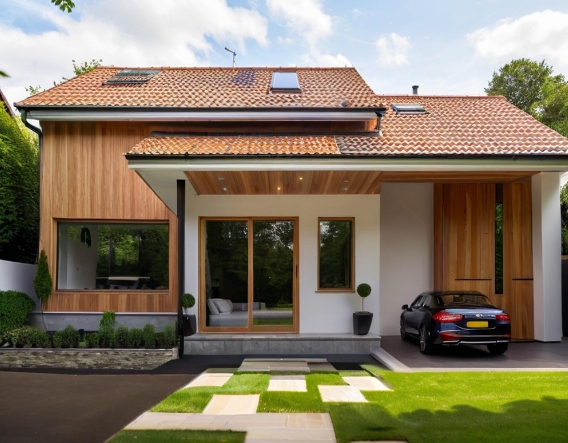There are so many building materials, why choose light steel keel?
There are so many building materials, why choose light steel keel?
One-stop solution provider for prefabricated buildings
From private residences to popular homestays
From corporate parks to temporary offices
Light steel is sweeping the construction circle as a "dark horse"
Why can it shake the status of traditional building materials?
Why do national policies frequently "support" it?

An article that thoroughly explains the hard-core strength of light steel
01
Private residence: light steel vs brick and tile house
Is building a house like playing with building blocks? It saves time, effort and earthquake resistance
Traditional brick and tile houses take several months to build walls and plaster, while light steel structures use factory prefabrication + on-site assembly mode. A villa with a total construction area of 300 square meters can be put into operation in as fast as 90 days.
Core advantages
Seismic resistance: The flexible structure of light steel keels can withstand a magnitude 9 earthquake, while brick-concrete houses are prone to cracking and collapse in strong earthquakes;
Say goodbye to "building houses according to the weather": Construction continues as usual in rainy seasons and cold winters, while brick-and-tile houses can only be stopped in rain and snow;
High housing rate: The wall thickness is only 1/3 of that of brick-concrete houses, and the same area has 5%-8% more usable space.
02
Scenic area homestays: light steel VS wooden houses
The "invisible track" of Internet celebrity homestays
Although wooden homestays are beautiful, they are worm-eaten, cracked, and have high maintenance costs, which give owners headaches. Light steel buildings are becoming the "new favorite" of major domestic scenic spots
Core advantages
Double lifespan: Aluminum-zinc-coated steel plates are rust-proof and anti-corrosion, and will not rust for 50 years, while wooden houses need major repairs in 10 years;
Pass fire protection in seconds: Class A fireproof materials eliminate fire hazards in wooden houses;
Various shapes: Curved surfaces, cantilevers, and glass curtain walls are easily achieved, making it easier to create "Internet celebrity models" than wooden houses.
03
Office housing: light steel VS iron house
Say goodbye to the cheap feeling of "cold in winter and hot in summer"
Companies often choose iron houses to save costs, but employees complain that "it becomes an oven in summer and an ice cellar in winter". Light steel offices use strength to break prejudices:
Core advantages
Full comfort: 15cm rock wool sandwich wall insulation performance is comparable to brick walls, and electricity bills are reduced by 40%;
High-end but not expensive: metal carved panels/glass curtain wall facades, the cost is only 20% higher than iron houses, and the texture is improved by 10 times;
No waste when relocating: modular design can be disassembled and relocated as a whole, and half of the iron house will be wasted once it is disassembled.
Picture
04
Multiple national policies
Make choosing light steel buildings worry-free
The "14th Five-Year Plan" Construction Industry Development Plan clearly promotes prefabricated buildings (including light steel). Local governments in Hebei, Chongqing, Anhui and other places have successively issued relevant subsidy policies. Rural self-built houses can receive subsidies ranging from 200 to 500 yuan per square meter for using light steel prefabricated buildings.
The future of light steel buildings
From "just being able to live in it" to "living in it safely, comfortably and with personality", light steel is redefining the standard of "good houses".
When national policies, market demand and technological innovation form a synergy, this "steel box" may be the answer to future buildings.


